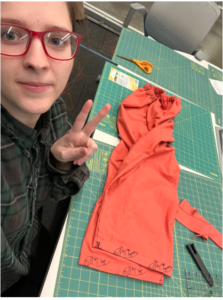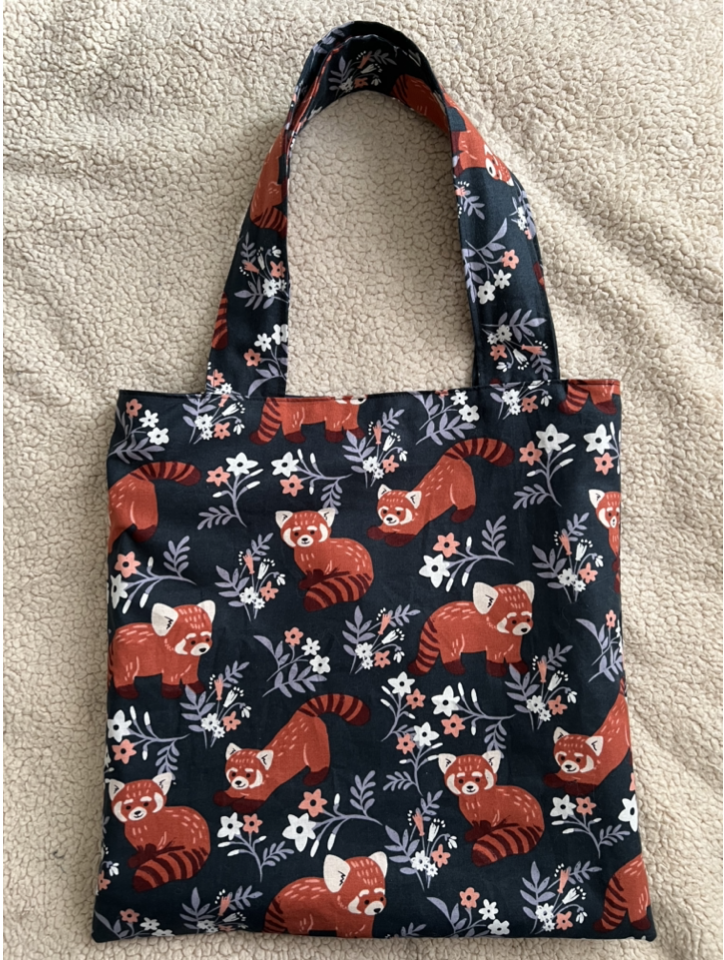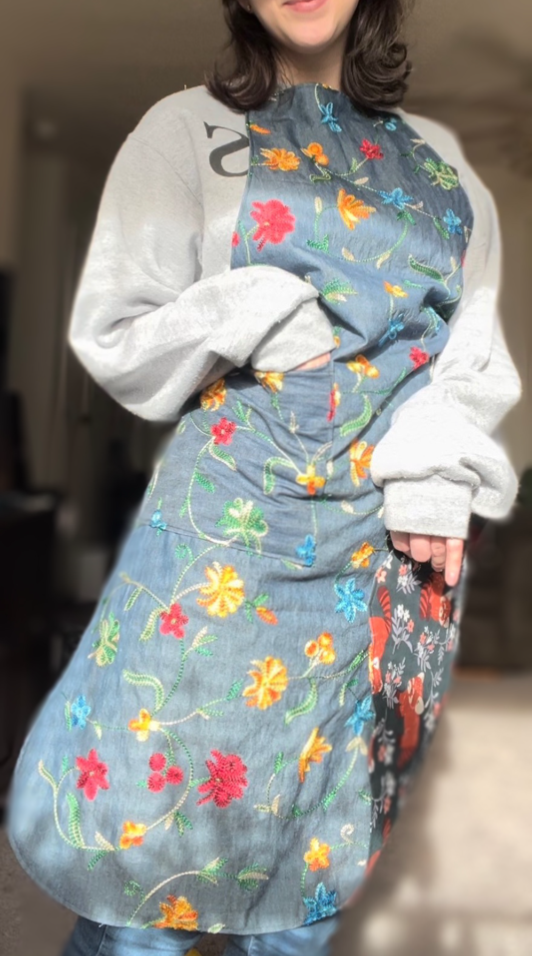
The Fabrics lab is home to a variety of equipment, student guided workshops, and other opportunities to improve your skills and complete a soft materials project from start to finish. Capabilities include sewing, embroidery, ironing, and cross stitching. Our peer mentors are happy to help and answer questions, and we look forward to seeing you in the lab!
What can I do in the Fabrics Lab?
Machine Sewing
Hand Sewing
Embroidery (by hand)
Ironing
Mending Clothes and other Fabrics
Example Projects
Tote Bag

Created by Alyssa F., 2021
A basic tote bag can be a fairly straightforward sewing project; but it can also be a fantastic project for experimentation with colors, shapes, and different kinds of embroidery. Although the tote bag pictured seems fairly simple, it has several decorative embroidery features hidden within it. Tote bags are a great project for repurposing reclaimed fabrics and for utilizing pieces of scrap fabric that might otherwise end up in a landfill (by sewing the pieces together to make larger fabric pieces to craft the bag out of). They also make very handy re-usable grocery bags, which help reduce the use of plastic grocery bags!
The parts of this project were:
- Fabric
- Thread
- Bobbin
- Ball point pins
- Self-healing cutting mat
- Meter stick (straightedge)
- Sewing machine
- Sewing needle
- Iron
Design
0.5 hours- basic geometric shapes
Marking Pattern Onto Fabric and Cutting
1 hour- measure twice, cut once
Sewing and Ironing
1 hour
Cleaning up and 5-minute shop job
15 minutes - clearing out fabric scraps and thread bits, sweeping, putting all things back in their places
Apron

Created by Alyssa F., 2021
An apron is another example of a utilitarian, wearable sewn object. Like tote bags, aprons also serve as a platform for experimentation with colors and various types of embroidery; and reclaimed fabrics and fabric scraps can be incorporated into the design of the apron. You can also choose to sew on a variety of pockets—perhaps one for a caliper and one for pieces of candy. Aprons add a touch of panache and personality to everyday gardening or cooking, though they also do a great job of keeping metal or wood chips off of your clothes, as well as coolant and machine grease!
The parts of this project were:
- Fabric
- Thread
- Bobbin
- Ball point pins
- Self-healing cutting mat
- Meter stick (straightedge)
- Sewing machine
- Sewing needle
- Iron
Design
30 minutes- based off of an existing apron
Marking Pattern Onto Fabric and Cutting
1.5 hours
Sewing and Ironing
2 hours
Cleaning up and 5-minute shop job
15 minutes - clearing our fabric scraps and thread bits, sweeping, putting all things back in their places
